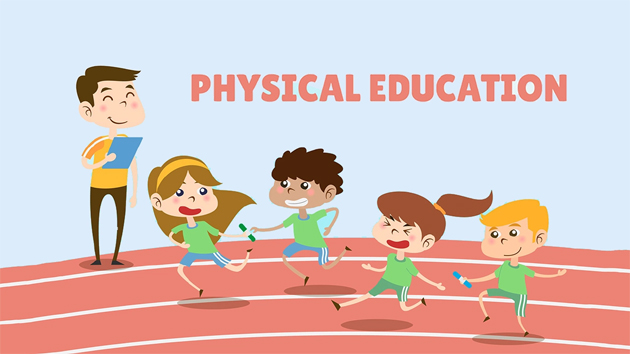Ashok Singh Jamwal
Physical Education is a very crucial value addition aspect of society’s growth that has a direct bearing on society at large and specifically on each and every youth. The State of Jammu and Kashmir followed a four-tier Sports competition system: School, College, Universities level then District, State, and National championships before the international tournaments/ competitions. The coaching/sports training centers/system primarily depend on Government-run schools across the State. Uncertainty emerging out of sponsored militancy across the State of Jammu and Kashmir uprooted the sports system more drastically in rural areas causing disturbance for School, Block, District, and State-level competitions for almost two decades. However, the system is coming back to normalcy with due diligence and active attention of J&K Government under Lieutenant Governor of J&K.
The contribution of YS&S and Sports Council besides Physical Education teachers, coaches, mentors, and supporting staff including stakeholders is also one of the prominent factors. The engagement of society in sports activities both from urban and rural areas has increased to 70 lakhs out of 1.56 crores total population for the year 2022-23 as per a report revealed from the YS&S Department.
The four-tier model of Physical Education followed by J&K UT is implemented through a total of 10,000 Govt schools, 120 colleges, 9 Government Universities and a Youth Services and Sports Department including Sports Council. It evidently shows that 100 percent share of the sports infrastructure is held and managed by the UT J&K Government. Interestingly, there are 1,500,000 Students registered with 960 primary 300 middle Schools, 108 High Schools, and 62 higher secondaries in J&K Government. Besides physical teachers, 1508 Physical Masters and 97 Physical Education Lectures are imparting coaching and teaching Sports skills in Y&S Department whereas 37 coaches, 10 instructors, and 100 Mentors India are appointed/engaged for imparting coaching in 50 recognized disciplines/games under different Government schemes in 20 districts of J&K. The 20 outdoor, 28 indoor stadiums, and 291 fields under Sports Council are short of coaches and supporting staff to facilitate the deserving youth/athletes. The required rate has accelerated in recent years under Khelo India engagement and Rehbar Khel Government schemes but the situation continues to be gloomy as the movement from private schools across the UT is helpless even after having various Government initiatives/policies proposed for sportspersons to rise. What ails the Physical Education/Sports in J&K: Is it lack of infrastructure, is it outdated coaching and teaching infra, is it lagging behind to cope with new methodology, inadequate training, demoralization of coaching/teaching and non-coaching/teaching staff owing to stagnation or is it lack of will and involvement of the responsible officials at the helm of the top affairs?.
On my frequent visit to both Urban and rural areas of the J&K, it is understood that the sports infrastructure before the abrogation of 370 was in very few districts with minimum sports experts, teachers / coaches, and sporting staff. There were few counted Districts where the proper sports coaching/ teaching classes were conducted in Government institutions only; however, the private institutions are still behind the screen even after acknowledging the importance of sports. No doubt, that Government institutions teaching/ coaching staff are well educated, trained with sports experience but the notable gaps in terms of accountability and audit ability need serious professional approach on the part of Director, Secretary, Regional Heads, District and UT level officials both in sports teaching and coaching sectors to gain and extend the boundary to reach up to every individual.
In the present time, it is more essential to keep pace with coaching methodology with due aptness, requisite training for coaches, teachers, and mentors plan against stagnation in the growth of human resources, to maintain due dignity and morale of the teachers/coaches, to make coaching/teaching and learning an interactive process, periodical review of course content to make it easy digestible for trainee and trainees at the base level, a strong feedback system between teachers-parents at frequent intervals rather than at the end of school or block/Panch/District level competitions and above all to create a sense of professionalism amongst teaching/coaching and supporting staff for attaining a well-coordinated mechanism so that the desirable results can be achieved.
The Heads at all Physical-related Departments are requested to be Sportspersons with healthy sports background at National level competitions, to feel the pulse of sportsmanship and almost construction of Standard Sized Fields and Stadiums besides properly utilization of sports gears/materials purchased out of public money. A transfer, promotion and requirement policy in Sports development/Sports Council) under proper mechanism to be devised to overcome unfairness. Furthermore, like National Anti-doping Agency, UT Anti-Doping Agency are required to be established in each District to check the use of anabolic steroids from lower competitions.
The selection process for admission/appointments under sports categories in professional courses/Government jobs should be meticulous, focusing exclusively on district/State events officiated by certified referees recognised/ observed by Sports Council or equivalent Government Departments to prevent ethical lapses.
It may be in the right earnest to acknowledge the services of high-performance coaches in the education sectors (school, colleges, and universities) of J&K UT. for achieving high results to empowering future generations with sound health, head, and heart at an affordable price and in a well-coordinated and controlled manner. However, it is imperative for YS&S Department of UTJ&K to introspect, inspect, and introduce more realistic methods to make Government, Private Schools/institutions like autonomous bodies attractive both in terms of infrastructure and instructions (planning) for achieving the real aim, objective, and target of physical education.
(The author is former Divisional Sports Officer JKSC)
Trending Now
E-Paper


